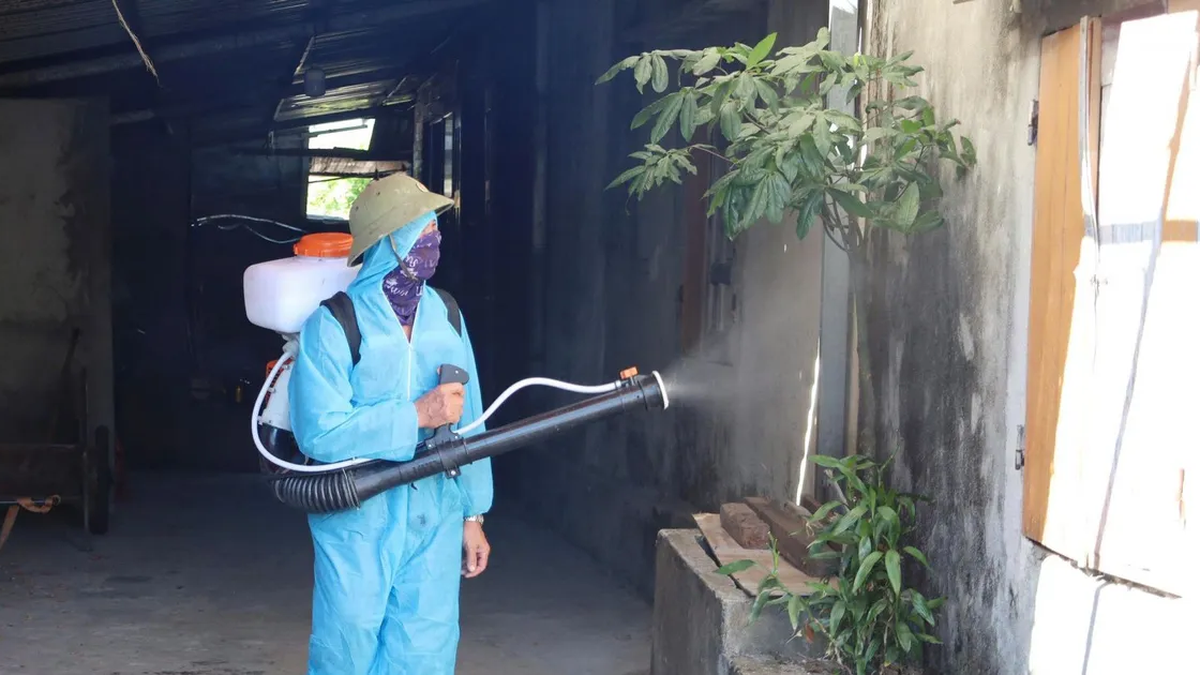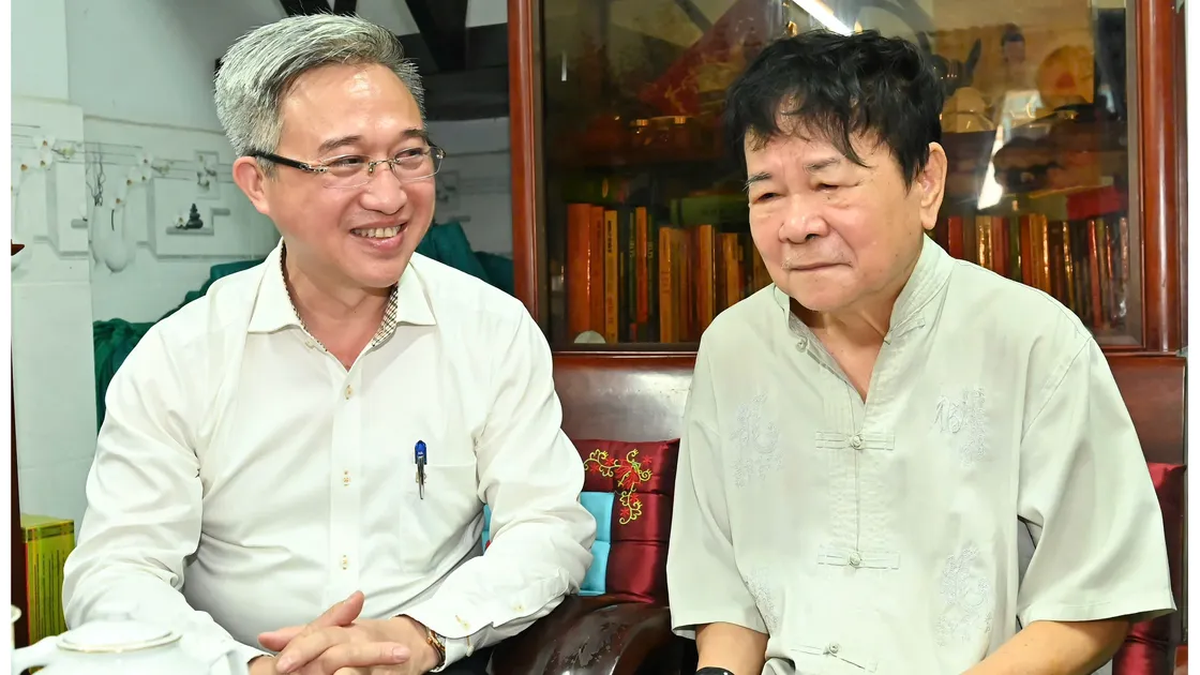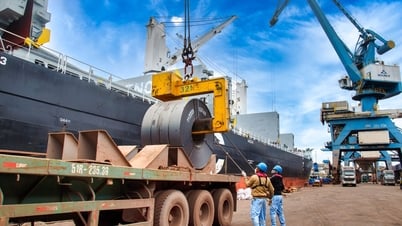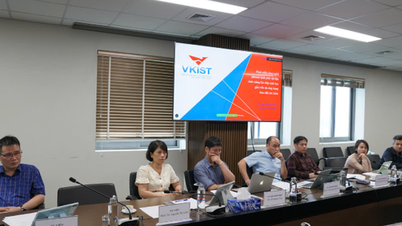The Vietnamese State was the first state in history to establish and exercise sovereignty over the Hoang Sa and Truong Sa archipelagos when these two archipelagos were still ownerless.

Soldiers and students look at photos at the photo exhibition “Hoang Sa – Truong Sa in the heart of Quang Ngai ”. (Photo: Dinh Huong/VNA)
Vietnam's seas and islands - a historical view
The Vietnamese State was the first state in history to establish and exercise sovereignty over the Hoang Sa and Truong Sa archipelagos when these two archipelagos were still ownerless. The establishment and exercise of Vietnam's sovereignty over these two archipelagos was clear, continuous, peaceful, and in accordance with the current principle of territorial acquisition - the principle of effective occupation - of international law. The Hoang Sa and Truong Sa archipelagos were ownerless islands until the 17th century. At that time, the two archipelagos were shown as a continuous strip, including Hoang Sa and Van Ly Truong Sa and were initially called by the Vietnamese by the common name of Bai Cat Vang (shown in the ancient map of Vietnam called "Toan tap Thien Nam tu chi lo do thu" compiled by geographer Do Ba and completed in 1686). During his lifetime, scholar Le Quy Don (1726-1784) in his book "Phu Bien tap luc" about Quang Nghia prefecture, An Vinh commune, Binh Son district, spoke very carefully about Bai Cat Vang: "...Out in the sea to the Northeast, there are many islands, up to more than 130 islands, separated by the sea, from one island to the other, it takes a day or a few hours to reach. On the mountain there is a freshwater lake. In the island there is a golden sandbank about 30 miles long, flat and large. On the island there are countless nests of swallows, thousands and thousands of species of birds, when they see people they perch around without avoiding, on the sandbank there are many strange objects. many…”“Dai Nam Thuc Luc Tien Bien” compiled in 1754 under the reign of Lord Nguyen Phuc Khoat also spoke more clearly about Hoang Sa and Truong Sa: “There are more than 300 sandbanks, stretching for thousands of miles, commonly known as Van Ly Truong Sa, on the island there is a fresh water well.”“Lich Trieu Hien Chuong Loai Chi” by Phan Huy Chu (1782-1840) is a large encyclopedia of the 19th century, completed in 1821, also clearly stated: “The Nguyen Lords established a Hoang Sa team of 70 people, people from An Vinh village took turns to collect sea products. Every year, in March, when receiving the order to go, they had to bring enough 6 months of salary, carry 5 small boats to the sea, and it took 3 days and 3 nights to reach that island. There, they could freely search for things… In August, the team returned, entered Yeu Mon gate to Phu Xuan citadel, and handed them over.”According to Dr. Tran Cong Truc, former Head of the Government Border Committee: “In the archives in Hue, We have found the king's notes on the establishment of the Hoang Sa team, then sending this team to Hoang Sa and Truong Sa, with specific times and decisions to appoint team leaders to command the Hoang Sa and Truong Sa such as Pham Quang Anh, Pham Huu Nhat... We also found in the genealogies of the clans in An Vinh commune, Binh Son district, the king's documents on sending strong men to join the Hoang Sa team. This is the legal evidence to say that, clearly, the Vietnamese State has exercised its sovereignty over the Hoang Sa and Truong Sa archipelagos."

Loyal oath to protect the sea
National sovereignty is supreme and inviolable. The declaration of national sovereignty “Nam quoc son ha” a thousand years ago has been continued by generations of Vietnamese people. Generations of Vietnamese people have devoted countless efforts and blood to establish sovereignty, preserve the territory, the sacred seas and islands of the Fatherland.

Hundreds of years ago, the best sons of Vietnam overcame countless difficulties and hardships, sacrificing themselves in the vast ocean for the country's sovereignty. The folk songs that are still passed down to this day, such as: "Will Hoang Sa return - The king's order sent people determined to go" are the most concrete evidence of their bravery and the miracles they accomplished.
How admirable and touching it is that before the boat sets sail, each person will prepare a pair of mats, seven rattan ropes, seven bamboo poles so that if they die, their comrades will tie them together, attach a bamboo tag with their name and hometown, and then throw them into the sea, hoping that if their bodies are lucky enough to wash ashore, people on the mainland will know who they are! Because "Hoang Sa has many islands and sandbanks - A mat wrapped with several rattan ropes" that in many previous centuries, the royal court issued a decree to posthumously confer on some Hoang Sa captains who also manage Truong Sa the title of "Superior Gods" and the Hoang Sa soldiers who also manage Truong Sa the title of "Hoang Sa Heroes". The brave spirit, limitless determination, and extraordinary bravery of the previous generation are continued by the next generation. A typical example is the fight to protect the sovereignty of the Fatherland on Gac Ma, Co Lin, and Len Dao reefs on March 14, 1988.
At the head of the waves, the wind, the means of weapons are limited, there is no land, no fortifications to cover themselves, but with love for the country, determination to protect the sacred sovereignty of the Fatherland, the officers and soldiers of the forces on the 3 ships HQ 604, HQ 605 and HQ 505 and the forces protecting Gac Ma, Co Lin, Len Dao islands have shown their steadfast will, brave spirit, and determination to the end to protect the sovereignty of the sea and islands of the Fatherland. "Do not retreat. We must let our blood color the national flag and the glorious tradition of the Army" - the saying of Heroic Martyr, Lieutenant Tran Van Phuong, Deputy Commander of Gac Ma island at that time not only shows the heroic spirit, but also the posture of a true master of the sea and islands in any circumstance.
The historical event of Gac Ma has fully and clearly demonstrated the qualities of loyal revolutionary soldiers, the excellent sons of the country, ready to sacrifice themselves, not retreating, determined to use their blood to protect the sacred islands of the Fatherland.
Protecting sovereignty over seas and islands – an important element of Vietnam's sea and island culture
Vietnam's seas and islands not only stretch along the length of the country with thousands of kilometers of coastline, with thousands of large and small islands, from North to South, but deep in the Vietnamese subconscious are associated with legends about the nation's origins and unique maritime culture.
The legend of Lac Long Quan and Au Co, from a hundred eggs, gave birth to a hundred children, 50 children went to the forest, 50 children went to the sea to make a living, has shown that, since ancient times, our ancestors not only lived on land but also attached to the sea. Other legends about Chu Dong Tu, Mai An Tiem... reflect that ancient Vietnamese people paid attention to exploiting resources from the sea.

That is the most primitive thinking about the process of conquering the sea of the ancient Vietnamese. Hidden in the stories are lessons about the determination and creativity of Vietnamese ancestors in the process of conquering and exploiting the sea and islands; as well as showing that the awareness of the Vietnamese people towards the sea and islands existed very early.
Generations of Vietnamese people have built and nurtured a unique Vietnamese maritime culture, from customs, knowledge, and experiences that have been ingrained in the blood and flesh of the people, becoming folk songs and proverbs; to performing arts, rituals...; visual arts with communal houses and shrines to worship whales...; festivals of coastal people, of which the most typical is the Whale Festival.
In addition, a particularly important element of Vietnamese sea and island culture is the culture of protecting national sovereignty at sea. This is a story that has existed since very early times and has been of interest to feudal dynasties. For example, the Tran Dynasty was a dynasty originating from fishermen, understood the sea very well, and knew how to use the sea as an element to protect the country.
During the Nguyen Dynasty, King Gia Long also surveyed and measured the sea routes, published books about seaports and provided travel instructions on seaports; King Minh Mang continued to survey and measure the sea routes, draw maps, build temples, erect steles, and plant many trees on Hoang Sa and Truong Sa islands. During the reign of King Tu Duc, there was a very typical figure, Bui Vien - a sea-oriented reformer - who contributed to the construction of Hai Phong port and the development of the marine economy.
Later, during the resistance war against the US to save the country, the sea was also used as an important element contributing to the victory of our army and people. Many resounding victories of our Army at sea, including the Ho Chi Minh Trail at sea, were a unique creation in the history of the Vietnam People's Army.
It can be said that, since time immemorial, the Vietnamese community living in coastal areas has always been closely connected to the sea and islands, establishing and exercising sovereignty, exploiting and firmly protecting the sovereignty of the sea and islands - a part of the "blood and flesh" closely linked to the longevity of the Fatherland./.
Source: https://www.vietnamplus.vn/quan-dao-hoang-sa-truong-sa-khac-ghi-loi-the-giu-bien-post921709.vnp
Source






























































































![[Infographic] In 2025, 47 products will achieve national OCOP](https://vphoto.vietnam.vn/thumb/402x226/vietnam/resource/IMAGE/2025/7/16/5d672398b0744db3ab920e05db8e5b7d)





Comment (0)